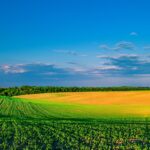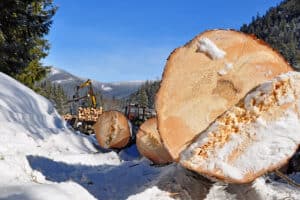Since the late 1980s, rural land — pasture, cropland and timberland — has been a safer, less volatile and more profitable investment than stocks. Is this past predictive of future returns for these investments?
From 1990 to 2009, the annual compounded return for the S&P 500 index was 7.32 percent.
I have no idea how to forecast stock returns over the next decade. (I’m tempted to say that no one else does either, but I won’t.) Over many decades, stocks returned about 9 percent before fees and taxes.
Given the American economy’s uncertainties, would a 3 percent annual return in the S&P 500 over the next 10 years be reasonable to all concerned? To add perspective, I will point out that the S&P 500 was down 11 percent for 2008-2009. Three percent stock return (before fees and taxes) would roughly approximate the forecasted annual rate of growth in U.S. gross domestic product for the next some number of years. Two to 10 years, take your pick.
The National Council of Real Estate Investment Fiduciaries (NCREIF) gathers information from tax-exempt investors, primarily pension funds, with which it develops individual indices for farmland and timberland returns. These are large holdings. Quarterly rates are multiplied to get an annual rate of return, and it is assumed that returns from early quarters are reinvested.
For the 1990-2009 period, the annual compounded return for these NCREIF timberland transactions was 11.75 percent before fees and without a tax hit. Cash yield comprised 45 percent of that return. Other timberland return indices are in the same ballpark.
If you were to add in fees and taxes on big holdings and not assume constant and complete reinvestment, the average annual net return might have been more in the 5-7 percent range. But that’s just a rough guess on my part.
My sense is that small timberland investments typically show higher rates of return than those in the NCREIF samples. But data are not available to prove or disprove this opinion.
Small timberland holdings are not set up or managed to throw off much cash annually in the way pension funds or money managers require. Small holders get most of their return as occasional lump sums from the sale of timber or some or all of the land itself. Predictable, rather than episodic, annual (taxable) income might come from hunting leases, firewood sales, mineral royalties and the like.
I have not been able to find proof that small timberland investments outperform larger ones, but that’s been my experience. It’s difficult to find large-apples-to-small-apples data for a number of reasons, including the lack of basic tracking information on small holdings that would include factors like leverage, structure of ownership, net for tax liabilities and benefits, disposition of the property (sale, exchange, or allocated to the tax-free portion of the estate, for example), conservation easements and so on.
If you try to track return for a significant number of small timberland investments, I think you would end with what epidemiologists call a “survivor population.” These are the individuals that are still being followed when the study ends. The ones who vanish or drop out of the study are not counted in the final calculations of mortality rates.
If you drop out of a small timberland study all the properties that have acquired one or more confounding factors that squirrel up (that’s the technical term) the integrity of their information, the analysis will be limited to the properties that were easiest to track over a long period of time. The survivors in a timberland study are not likely to be the best earners. I encourage return research on large v. small timberland holdings.
So for the purpose of arguing with myself, I’ll say on my own say so that the average small timberland holding will do at least 15 percent annual return before taxes and expenses if held for at least 10 years and one sale of merchantable timber is included. The amount of merch timber at the point of acquisition, degree of leverage and other factors obviously affect this return number.
Everything was down in 2009. The S&P 500 was negative. The NCREIF farmland index for 2009 showed an annual return of only 4.15 percent; the timberland index for last year showed a loss of 1.04 percent.
Two extension economists at Iowa State University (ISU), William Edwards and Don Hofstrand, calculated returns to farmland owners per year per acre for 1970 to 2009.
Total farmland return combines annual cash returns and change in market value for the land. The data for both measures come from the USDA’s Economic Research Service. Cash return is taken to be the cash rental return, a gross number that does not reflect deductions for property tax and expenses.
In dollars unadjusted for inflation, farm cash rents rose from $33/acre in 1970 to $167/acre in 2009 while land value rose from $392/acre to $3,650/acre. For this period, total farmland return averaged 13.6 percent a year, and 16.1 percent for the 2004-2009 period. The only down period was 1982-1987, which the authors characterized as the “farm crisis,” when annual return averaged -5.6 percent.
Mr. Hofstrand, co-director of Agricultural Marketing Resource Center at ISU, said that corn-based ethanol demand drove farmland returns after 2003-2004. The 1.8 percent total farmland return calculated for 2009 reflects weakness in the supply-demand-price relationship for corn used in ethanol last year.
About one-third of the U.S. corn crop is currently devoted to ethanol, which will amount to about 12.5 billion gallons in 2010. Ethanol production has been driven by the 2007 Energy Security and Independence Act that required the use of 36 billion gallons of biofuels annually by 2022.
Future farmland return, he believes will be tied to ethanol. If federal policy does not raise the 10 percent ethanol cap in gasoline to 12 or 15 percent, future total farmland returns will trend down inasmuch as the capacity to grow corn for ethanol exceeds demand. He does not foresee growth in corn exports or in its primary market, livestock feed. At the moment, overcapacity probably exists in both corn-growing land devoted to ethanol and ethanol-production capacity.
Mr. Hofstrand sees corn yield productivity increasing into the 300 bu/acre range on prime Iowaland, which will weaken future corn price if demand does not increase proportionately.
He finds that climate change is affecting the geographic locus of crop production. Corn land has been moving north as temperatures rise. Mr. Hofstrand suggests that long-term warming will increase the variability of precipitation and planting cycles—an early frost might, for example, come with a warmer growing season. If atmospheric carbon buildup were to stop today, he says, we still face a 25-year warming span resulting from the current carbon overload.
One bright spot on the horizon is the potential for biochar (charcoal or black carbon from biomass, such as agricultural and forest wastes, crop residues, urban bio-waste and mill wastes) to be incorporated into farm soils to improve fertility, increase soil productivity and sequester a lot of carbon. Biochar carbon sequestration is measurable and since it lasts for many years would have annual cash value as a credit.
Corn-based ethanol has its critics. It decreases mileage. Ethanol refineries receive a tax credit of $.45/g, which is supposed to expire at the end of this year. At a richer-than-10-percent blend, it can corrode engines. It involves major water-pollution issues, because corn requires much more fertilizer and pesticides than other biofuel feedstocks and substitute crops. Both corn and ethanol require large amounts of water. One 2009 study estimated that were corn-based ethanol to displace 25 percent of U.S. gasoline consumption, it would require 51 percent of U.S. cropland and about 180 gallons of water per gallon of fuel. (Erica Gies, “As Ethanol Booms, Critics Warn of Environmental Effect,” New York Times, June 24, 2010.)
Going forward, I’d look at the not-very-systematic information above and project return for stocks, farmland and timberland down from their previous 20-year averages. If you give me 3 percent for stocks over the next decade, give me 5-6 percent for the NCREIF timberland samples as NCREIF calculates them, at least 10 percent for small timberland investments and 5-7 percent for farmland.
I can’t prove this — I can’t prove any of these opinions — but I think bought-right land in terms of its assets, liabilities and price will be a safer, less volatile and more profitable investment going forward than any of the stock or bond alternatives. But I don’t think land returns will be as saucy as before.
This content may not be used or reproduced in any manner whatsoever, in part or in whole, without written permission of LANDTHINK. Use of this content without permission is a violation of federal copyright law. The articles, posts, comments, opinions and information provided by LANDTHINK are for informational and research purposes only and DOES NOT substitute or coincide with the advice of an attorney, accountant, real estate broker or any other licensed real estate professional. LANDTHINK strongly advises visitors and readers to seek their own professional guidance and advice related to buying, investing in or selling real estate.










Curtis,
Please, I would be grateful for your opinion on Peak Oil, and how it affects the outlook for agricultural land.
Thanks-
GB